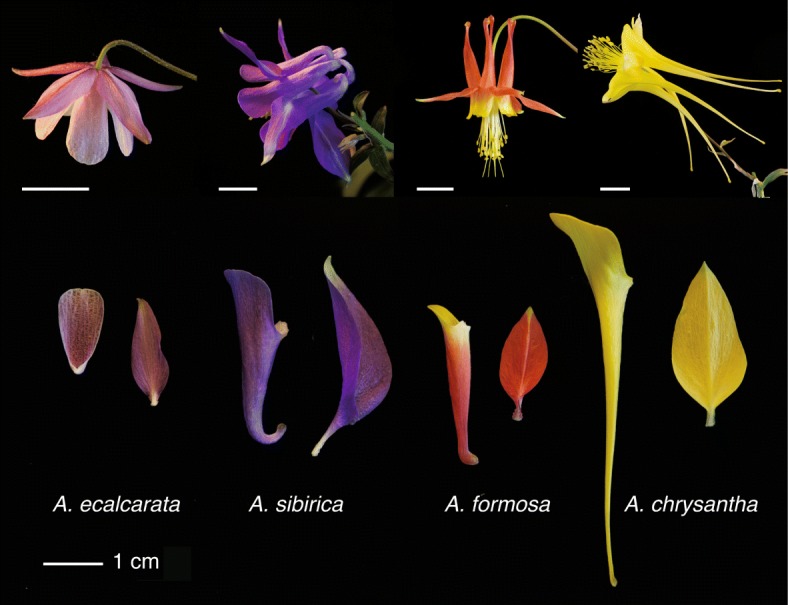Fig. 1.

Examples of floral morphological variation in Aquilegia species with different pollinators. Top: entire flowers. From left to right, A. ecalcarata, primarily pollinated by syrphid flies; A. sibirica, primarily pollinated by bees; A. formosa, primarily pollinated by hummingbirds; A. chrysantha, primarily pollinated by hawk moths. Scale bars equal to 1 cm. Bottom: a dissected petal (left) and sepal (right) from each species. The adaxial surface of the A. ecalcarata petal is in view, whereas all other petals are more-or-less viewed in the sagittal plane with the abaxial surface in view. The adaxial surface of all sepals is in view, however the A. sibirica sepal is partially folded longitudinally
